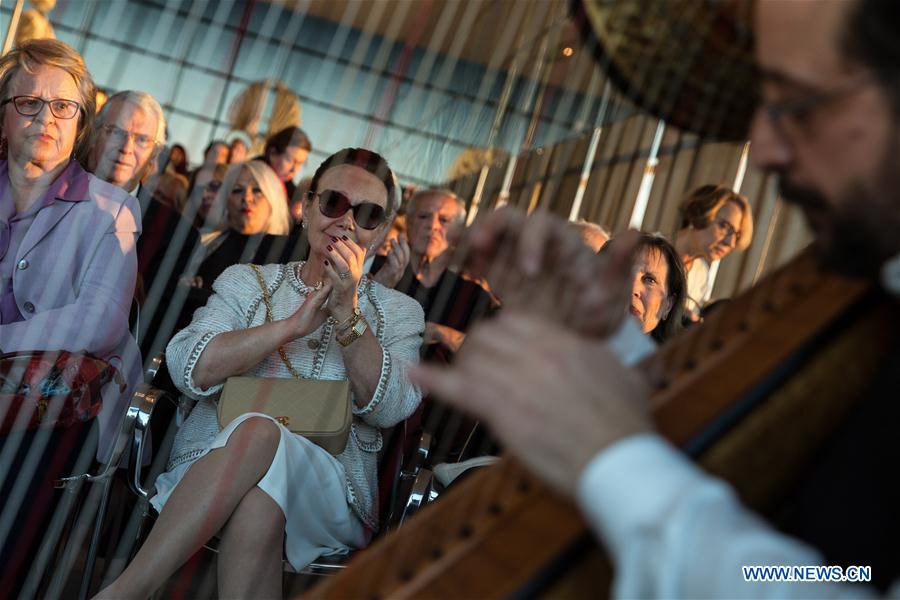 ?
?Visitors enjoy a harp performance at the Athens Acropolis Museum in Greece, on March 31, 2018. The summer season of the Athens Acropolis Museum was launched Friday evening with a music concert featuring an ancient Greek organ known as the "hydraulis." At the concert held in the museum's Parthenon Gallery, visitors had the opportunity to enjoy a performance featuring the musical instrument played by the Greek organist Ourania Gassiou, as well as a harp performance. (Xinhua/Lefteris Partsalis)
ATHENS, March 31 (Xinhua) -- The summer season of the Athens Acropolis Museum was launched Friday evening with a music concert featuring an ancient Greek organ known as the "hydraulis."
At the concert held in the museum's Parthenon Gallery, visitors had the opportunity to enjoy a performance featuring the musical instrument played by the Greek organist Ourania Gassiou, as well as a harp performance.
The hydraulis, the ancestor of the Western church organ, was invented by Ctesibius, one of the most famous engineers of his time in the Mediterranean city of Alexandria in Egypt in the third century B.C.
Operated by compressed air that was first channeled through a container of water to equalize the pressure, the water organ was found in temples, theaters, hippodromes and fairs, and was favored by emperors and the aristocracy of the Roman Empire.
Before the music concert, the museum's president Dimitris Pandermalis introduced the Dion hydraulis, a wonderfully preserved instrument from the first century B.C., which was discovered in 1992 in the region of Pieria in northern Greece.
"Carefully, tenderly, as though it were a newborn baby, we swaddled the find and the earth which clung to it and took it to an on-site laboratory," said Pandermalis, who witnessed the excavation of the instrument.
In 1995 a reconstruction project was started, and by 1999 a replica of the hydraulis was built based on the original model and in accordance with ancient descriptions.
The remains of the ancient hydraulis are exhibited at the Archaeological Museum of Dion, in the village of Dion, where it was found.















